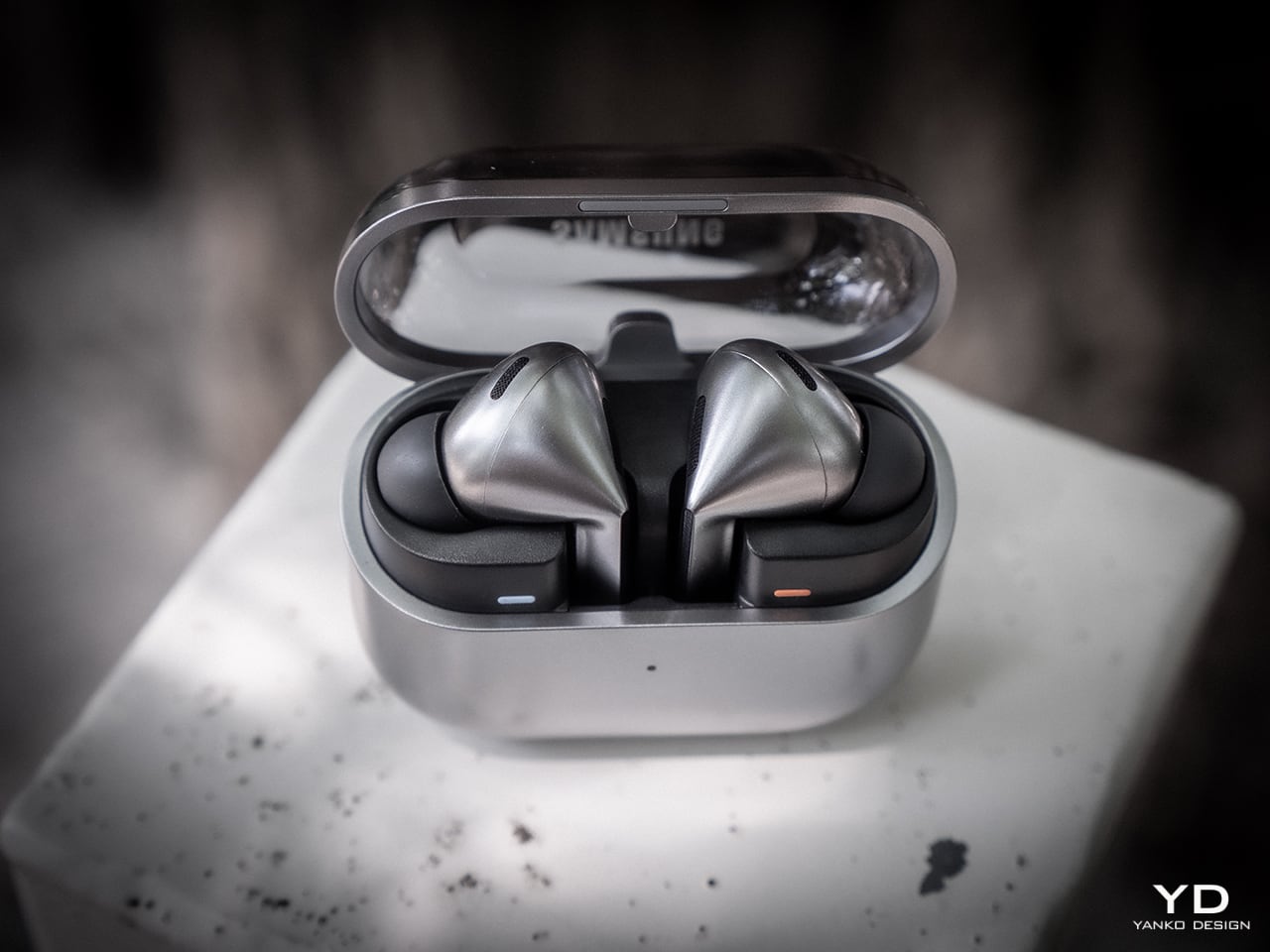
PROS:
- Exceptional Audio Quality: The Buds 3 Pro delivers clear highs and deep bass, enhanced by features like 360 Audio for an immersive listening experience.
- Advanced Noise Cancellation: Effective ANC, Adaptive Noise Control, and Ambient Sound modes provide a customizable listening experience that is ideal for various environments.
- Seamless Samsung Integration: They integrate smoothly with Samsung devices, offering features like real-time translation and enhanced audio quality through the Scalable Codec.
- Durability and Comfort: With an IP57 rating, the earbuds are water and dust-resistant. The ergonomic design ensures a comfortable fit during extended use.
CONS:
- Awkward Case Design: The charging case requires twisting the earbuds into place, which can be inconvenient and lead to accidental drops.
- Battery Life Limitations: Real-world usage shows shorter battery life than advertised, especially with all features enabled.
- Feature Limitations Outside Samsung Devices: Some features are optimized for Samsung products, limiting the full benefits for users with non-Samsung devices.
Samsung’s Galaxy Buds3 Pro has made a strong entrance with its stylish stem design and practical features. These earbuds offer a powerful audio experience thanks to a dual-driver system that delivers clear highs and deep bass, making them perfect for music lovers. The ergonomic silicone tips ensure a snug fit, providing comfort during long listening sessions, and their IP57 rating adds protection against water and dust, making them great for active users.
Designer: Samsung
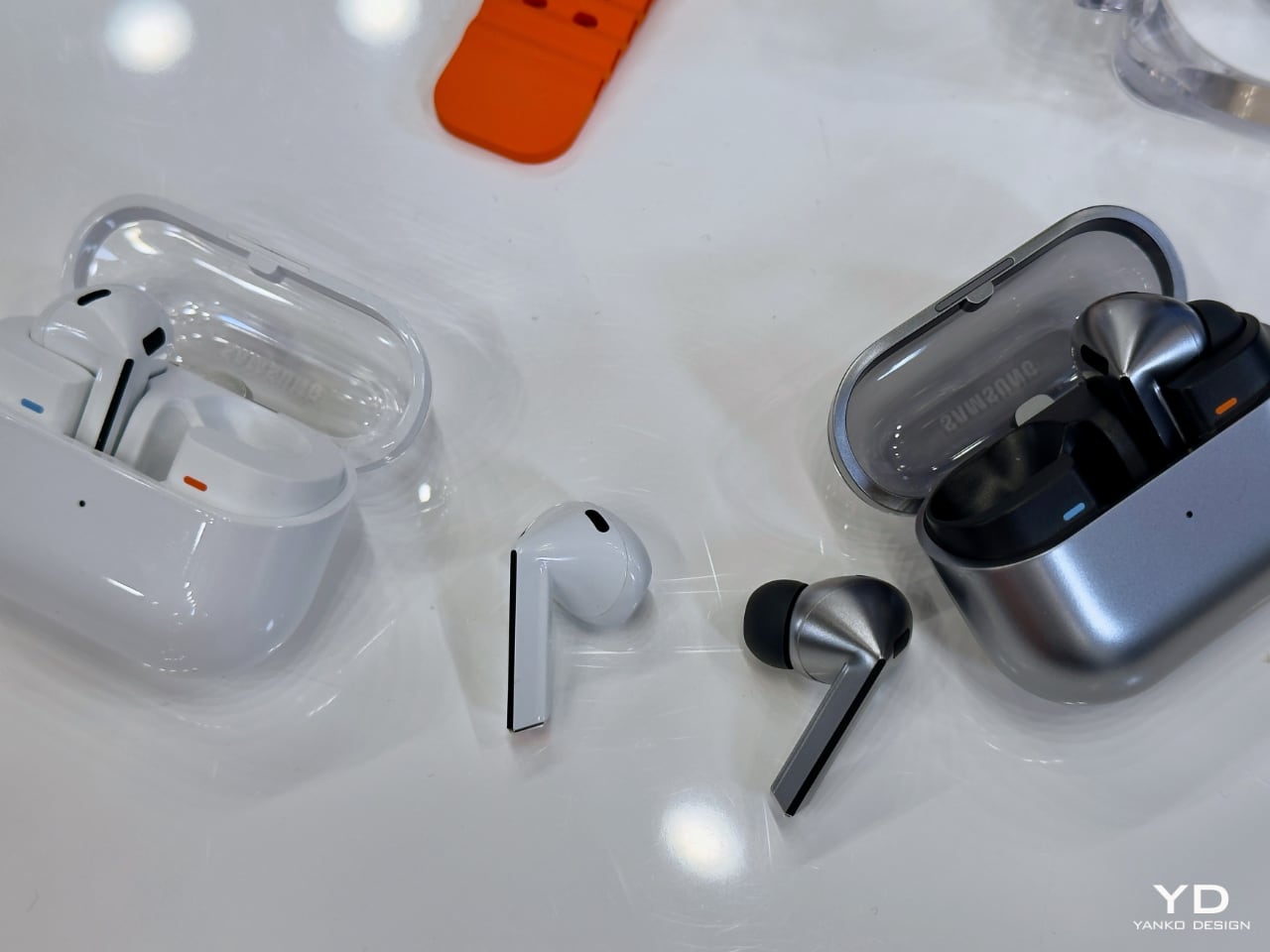
Packed with smart features, these buds include AI-powered sound adjustments that adapt to your environment, enhancing your listening experience. The real-time translation feature is a handy tool for travelers and language enthusiasts. While some features work best with Samsung’s latest devices, the Buds 3 Pro offers a strong mix of style, technology, and sound quality. Whether you’re on a call, streaming music, or navigating through your day, these earbuds are built to meet the needs of everyday life.
Design and Aesthetics
The Samsung Galaxy Buds3 Pro embraces a design that marries functionality with elegance. The stem-style structure enhances usability and audio performance by incorporating advanced components like control sensors and batteries within the stems, contributing to superior sound quality and call clarity.
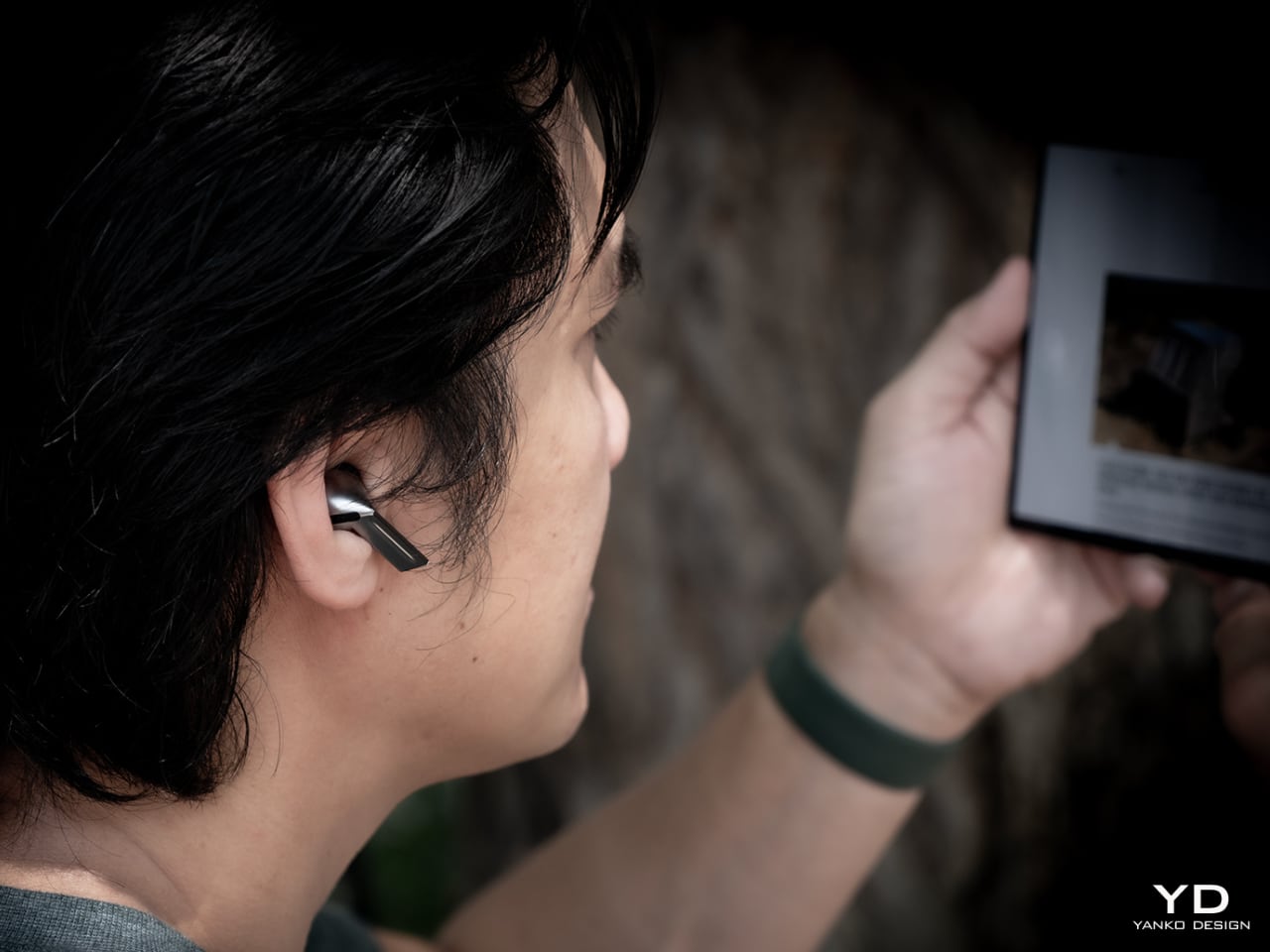
The customizable “blade lights” on the stems offer a neat and stylish feature, but they may not appeal to everyone looking for simplicity. While the lighting adds flair, my focus remains on sound quality, comfort, and overall performance. The lights are a nice touch but not a critical factor in choosing these earbuds.
The ergonomic design ensures a comfortable fit, with silicone tips that improve noise isolation and enhance sound quality. With an IP57 rating, these earbuds are reliable for various environments, whether you’re at the gym or exploring outdoors. We’ll explore the performance aspects further down, diving into how these features impact real-world use and contribute to the overall listening experience.
From a design perspective, there are limited ways to create Bluetooth headsets. They can fit directly in the ear or include a stem, as seen in the Buds3 Pro. This design is practical, enhancing usability by allowing better placement of components like microphones and batteries.
While the Buds 3 Pro’s design draws inspiration from other successful models, the inclusion of unique features like customizable lighting and advanced audio technology sets these earbuds apart. They offer a compelling combination of high performance and style, making them attractive for those who value both aesthetics and functionality in their wireless audio gear.
Ergonomics
From my perspective, the design of the Samsung Galaxy Buds3 Pro case has its pros and cons. I like that the case is lightweight and features practical additions like a USB-C charging port and an LED indicator for charging status. The transparent lid is also a nice touch, allowing me to see the earbuds without opening the case.
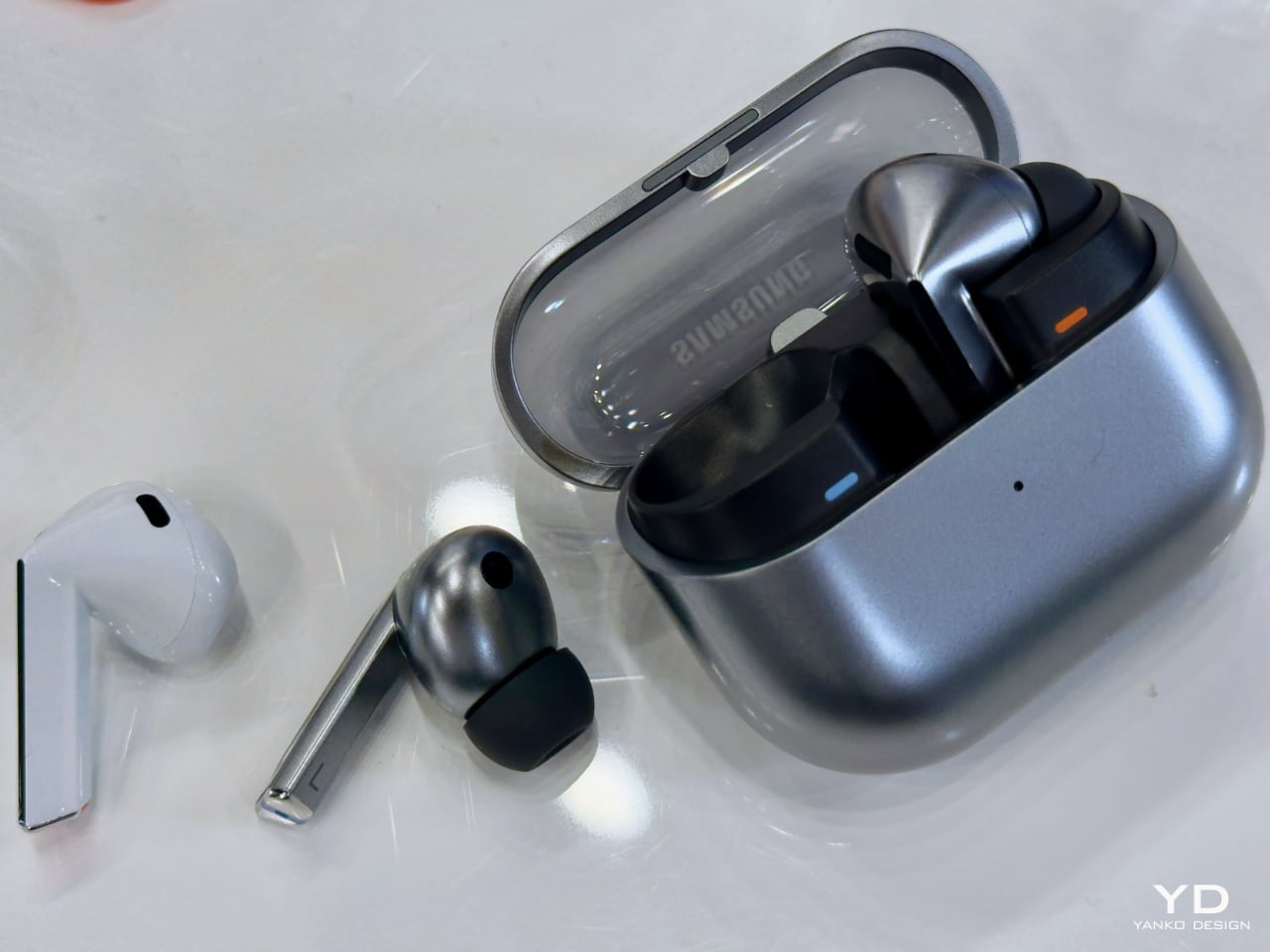
However, inserting and removing the earbuds can be awkward. They require a specific twist to fit properly, which isn’t the most user-friendly experience, especially when I’m on the go. I’ve actually dropped the earbuds a couple of times, twice on an airplane while fumbling around in the dark. It’s definitely not ideal. This is an area where the design could use some improvement to make handling the earbuds more intuitive and prevent such mishaps.
The earbuds are offered in two colors, white and black, with small red and blue dots to help indicate the correct placement in the case. While this color coding is helpful, it doesn’t completely resolve the awkwardness of fitting the earbuds into the case.
One thing I wish was smaller is the case itself. While it’s compact enough to fit in the coin pocket of my jeans, similar to the AirPods Pro case, it does bulge out more than I’d like. A smaller case would be more convenient for carrying around when I’m out and about.
Despite these concerns, the overall design remains stylish, and the case complements the sleek look of the earbuds. It supports wireless charging, which is a plus, but streamlining the handling and size of the case would greatly enhance the overall experience.
Performance
The Samsung Galaxy Buds3 Pro delivers exceptional audio quality, particularly when paired with newer Samsung devices like the Galaxy Z Fold 6 or S24 series. Featuring a two-way speaker system with a planar tweeter and dual amplifiers, these earbuds provide crisp, airy sound with robust bass. The 360 Audio feature enhances the soundstage, creating an immersive experience, although it can sometimes emphasize higher frequencies.
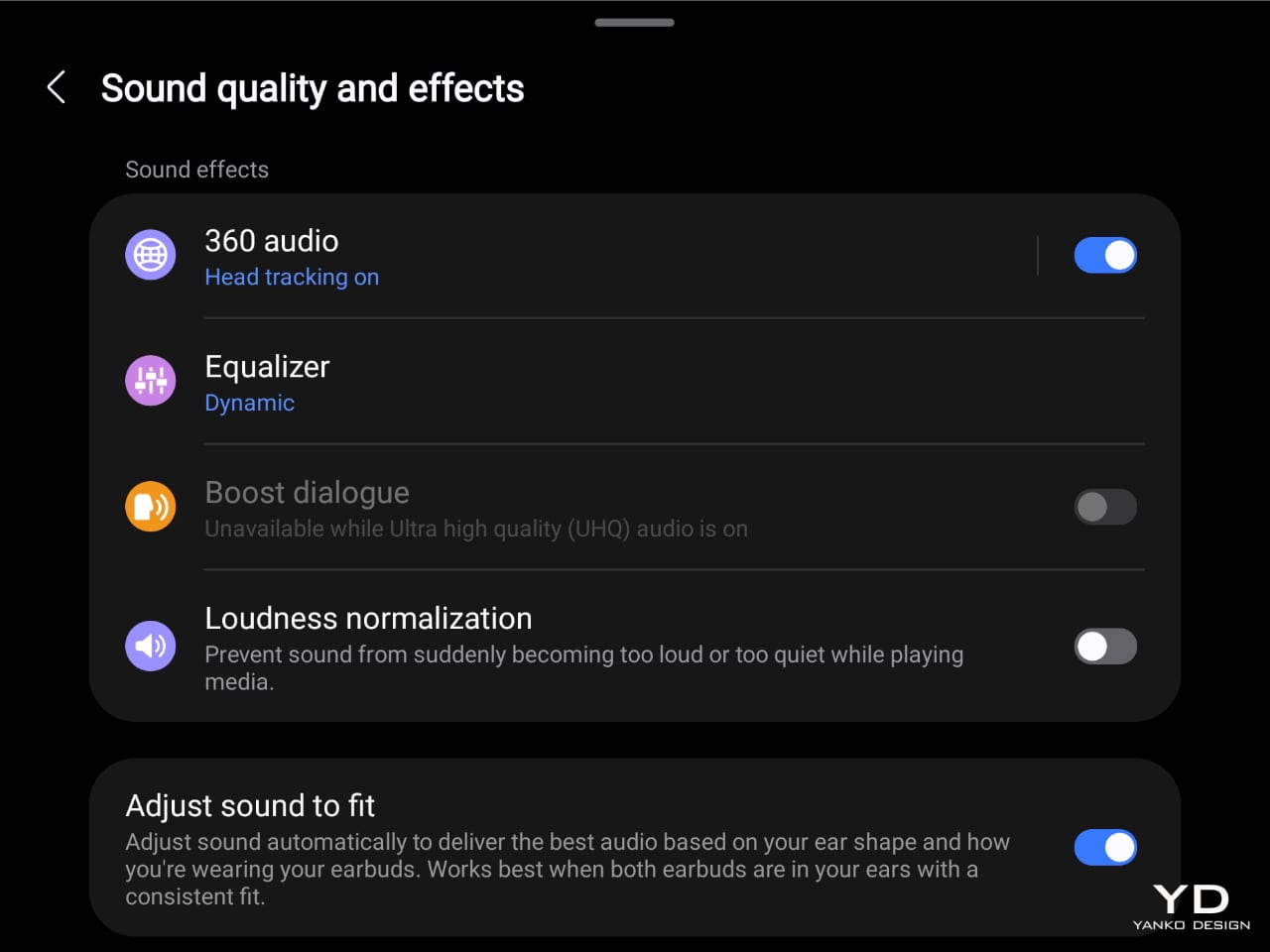
A key feature that enhances the audio experience is Samsung’s Scalable Codec. This codec adjusts the bit rate dynamically to ensure stable audio quality over Bluetooth connections. It provides near-lossless sound when the connection is strong, making it ideal for high-resolution audio playback on compatible Samsung devices.

The noise-canceling capabilities are impressive, offering Active Noise Cancellation (ANC), Adaptive Noise Control, and Ambient Sound modes. ANC effectively reduces background noise, making it easier to enjoy music without distractions. Ambient mode is handy for staying aware of your surroundings while listening, and adaptive mode adjusts noise cancellation based on the environment. During my flight to Tokyo from Dallas and back, the active noise cancellation canceled out nearly all the humming from the engine, making the journey pleasant. Just note that for long-haul flights, you might need two pairs of earbuds. In my case, I had a pair of AirPods Pro to swap out. That said, I dare say the Buds3 Pro is competitive when it comes to sound quality and noise cancellation.
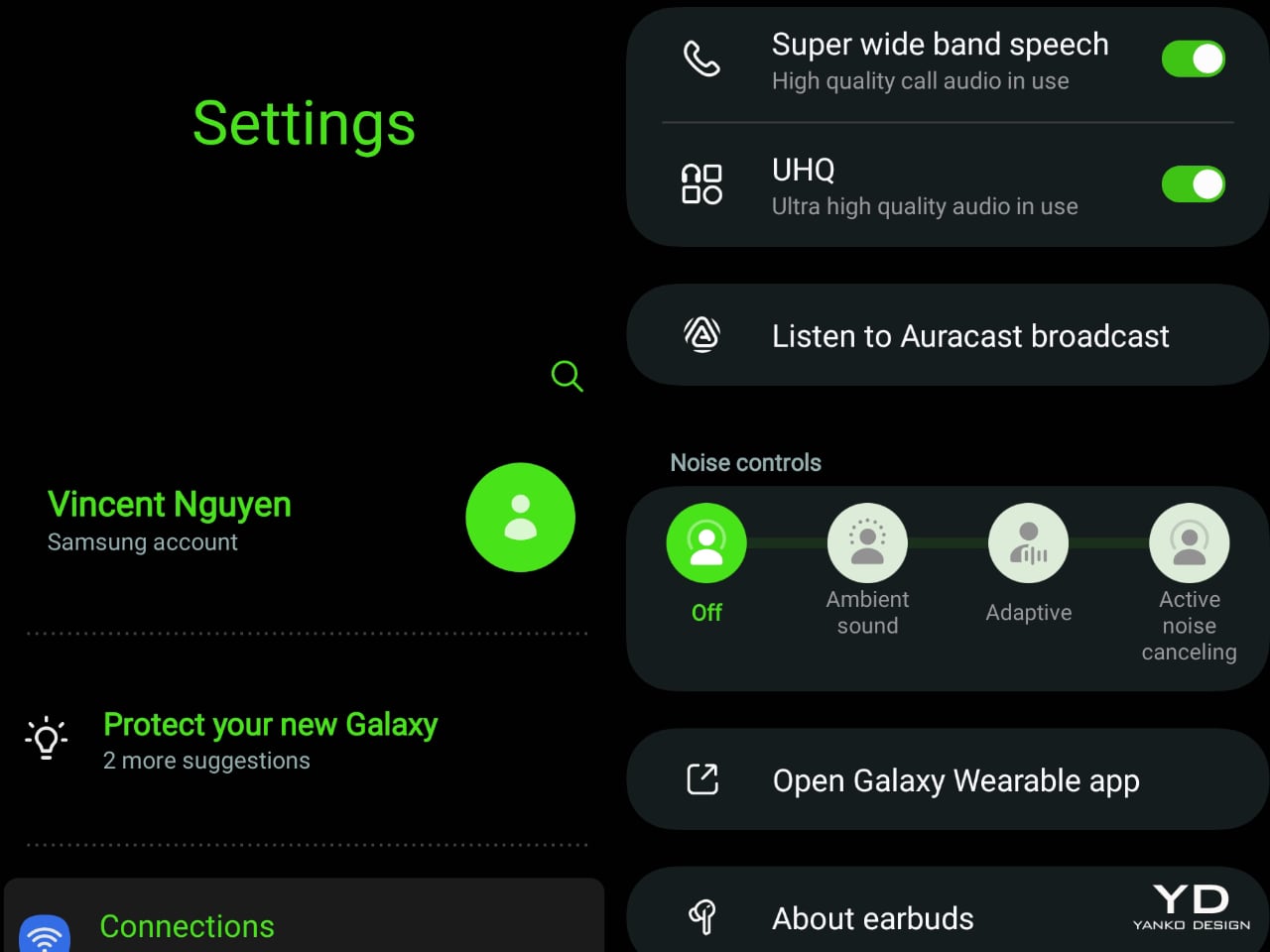
The sound quality of the Samsung Galaxy Buds 3 Pro truly shines across various musical genres. In “Hotel California” by the Eagles, the earbuds reproduce the intricate guitar work with remarkable clarity, allowing you to hear every detail as if you’re right there at the performance. The Buds3 Pro handles Michael Jackson’s “Billie Jean” with precision, capturing the sharpness and detail in his vocals and ensuring the instrumental elements are delivered with crystal clarity. When it comes to bass-heavy tracks like “Royals” by Lorde, the earbuds provide a strong yet balanced bass response that complements the vocals without overshadowing them. The complex musical arrangement in “Take Five” by The Dave Brubeck Quartet showcases the Buds3 Pro’s ability to maintain clarity and balance across a wide range of frequencies, with the piano and saxophone lines coming through with excellent definition and depth.
The Buds3 Pro excels in call quality as well. The triple-mic array ensures clear voice transmission even in noisy settings, while the transparency mode allows ambient noise to enter naturally during calls, enhancing the conversation experience.
Battery life is an area where expectations might differ. Samsung claims up to 6 hours of playback with ANC on and up to 30 hours with the charging case. However, real-world usage often shows battery life closer to 5 to 5.5 hours with ANC, 360 Audio, and high-resolution streaming enabled. Wireless charging and quick charging capabilities add convenience, but for extended listening sessions, having a backup or access to charging is advisable.

The Buds3 Pro also impresses with its sweat-proof performance. I’ve used them to mow the yard in 100-degree weather, and they remain in my ears exceptionally well without any issues with performance. Their IP57 rating ensures they can handle both sweat and dust, making them a reliable choice for outdoor activities and workouts.
Compared to the standard Galaxy Buds 3, the Buds 3 Pro offers enhanced audio quality, more advanced noise control options, and longer battery life. While the non-Pro model provides good sound and basic ANC, it lacks the Pro version’s premium features and audio experience.
Overall, the Buds3 Pro is impressive in performance, making it a top choice for anyone in search of high-quality wireless earbuds with a rich, immersive sound experience.
Sustainability
Samsung has integrated sustainability into the Galaxy Buds 3 Pro by using post-consumer materials in their construction, which helps reduce the environmental impact of new plastic production. The company is committed to increasing the use of recycled materials across its product line, aiming to incorporate them into every component by 2030 as part of its goal to achieve net-zero carbon emissions.

The packaging for the Buds3 Pro is also made from recycled paper, which aligns with Samsung’s sustainability initiatives and helps further reduce waste. These efforts demonstrate Samsung’s dedication to creating products that combine advanced technology with environmental responsibility.
Value and Verdict

For anyone within the Samsung ecosystem, the Galaxy Buds3 Pro is an easy recommendation. These earbuds integrate seamlessly with a wide range of Samsung products, including smartphones like the Galaxy Z Fold 6 and S24 series and Samsung tablets, laptops, and other smart devices. They offer features like adaptive noise cancellation and enhanced audio quality through Samsung’s Scalable Codec, making them an ideal companion for any Samsung device. This integration allows for smooth transitions between devices and enhances the overall user experience, making the Buds3 Pro a perfect choice for those who rely on Samsung’s ecosystem for their tech needs.
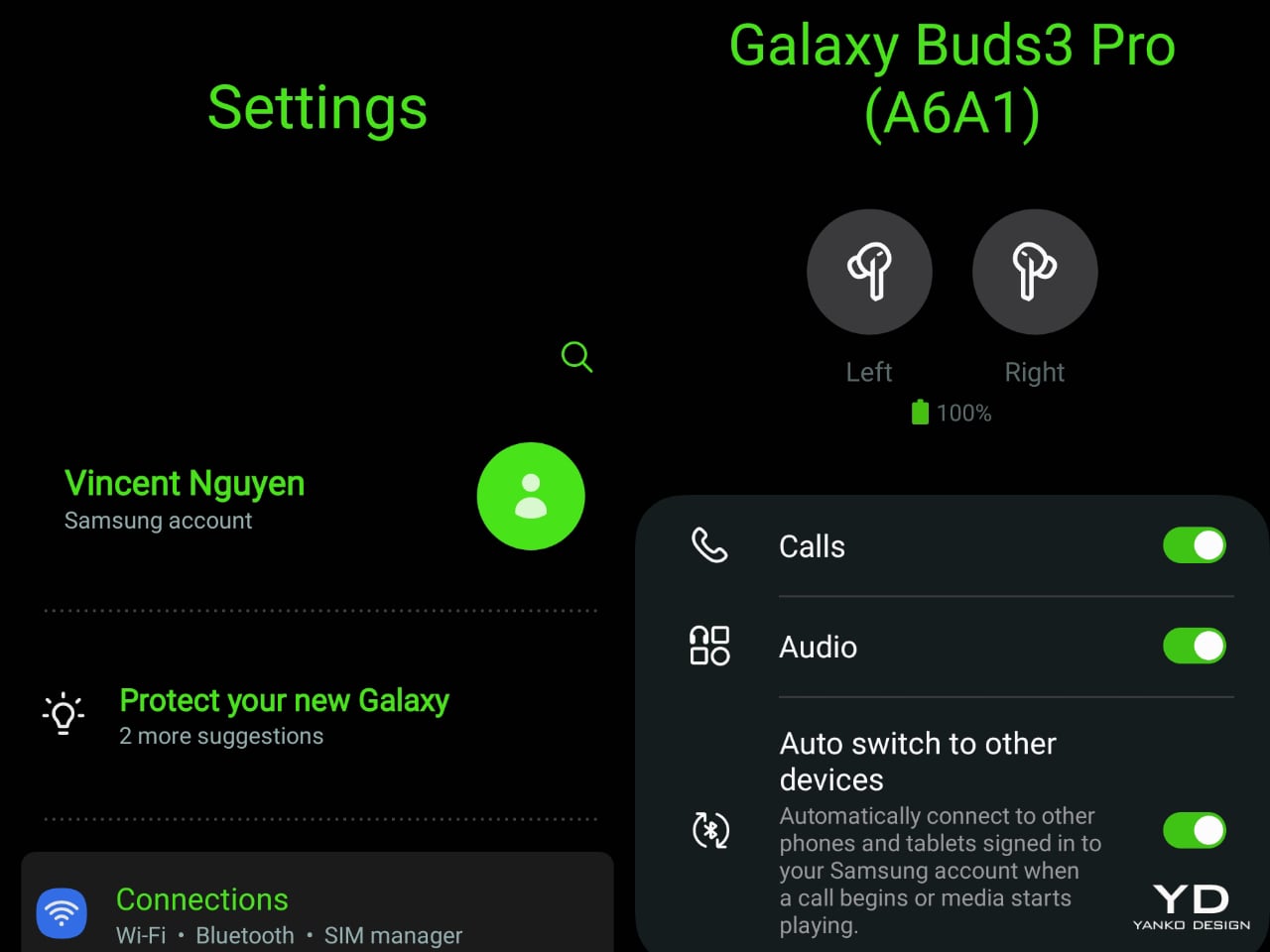
Even if you’re not part of the Samsung ecosystem, the Buds3 Pro is worth considering. They are compatible with any Bluetooth-enabled device and deliver exceptional sound quality, noise cancellation, and a comfortable fit, making them a versatile choice for all users. I enjoy having them as part of my everyday gear, whether in my go-bag for travel or daily use. Their performance and reliability make them a great addition to any tech setup, offering high-quality audio and convenience wherever you go.
The post Is Samsung Galaxy Buds3 Pro Worth It? In-Depth Review and User Experience first appeared on Yanko Design.